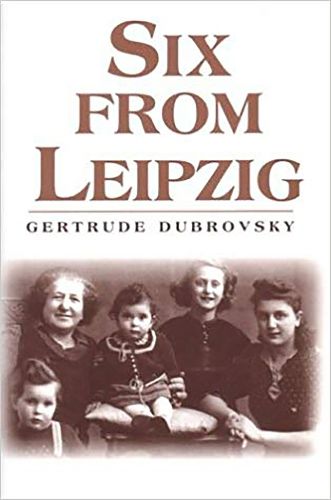Readings Newsletter
Become a Readings Member to make your shopping experience even easier.
Sign in or sign up for free!
You’re not far away from qualifying for FREE standard shipping within Australia
You’ve qualified for FREE standard shipping within Australia
The cart is loading…






Between December 1938 and September 1939, 10,000 children from Germany, Austria, Czechoslovakia and Poland were placed by their parents on trains - Kindertransport - bound for England, where they survived the Holocaust. Forced to remain behind, their parents were not as fortunate. The children’s care and education in England became the responsibility of the Refugee Children’s Movement, which consisted of 12 regional and about 100 local voluntary committees. Six cousins from Leipzig, aged seven months to 14 years, were among the 2,000 children who arrived in Cambridge, and were under the supervision of both the Movement and of the Cambridge Refugee Children’s Committee. The story of these children brings to life the issues faced by all those who travelled on the Kindertransports and the way in which the Committee tried to cope with their responsibilities. Although a number of memoirs have been written on this topic, this book puts the subject into historical perspective and should be useful to those who want to know how rescue was organized, by whom, and under what circumstances. It should also be of special interest to students of Holocaust history, and for those who are concerned with the care of traumatized children. It emphasizes the important role played by women in the rescue of these children, and in running refugee children’s committees; a fact that has not received the attention that it deserves.
$9.00 standard shipping within Australia
FREE standard shipping within Australia for orders over $100.00
Express & International shipping calculated at checkout
Between December 1938 and September 1939, 10,000 children from Germany, Austria, Czechoslovakia and Poland were placed by their parents on trains - Kindertransport - bound for England, where they survived the Holocaust. Forced to remain behind, their parents were not as fortunate. The children’s care and education in England became the responsibility of the Refugee Children’s Movement, which consisted of 12 regional and about 100 local voluntary committees. Six cousins from Leipzig, aged seven months to 14 years, were among the 2,000 children who arrived in Cambridge, and were under the supervision of both the Movement and of the Cambridge Refugee Children’s Committee. The story of these children brings to life the issues faced by all those who travelled on the Kindertransports and the way in which the Committee tried to cope with their responsibilities. Although a number of memoirs have been written on this topic, this book puts the subject into historical perspective and should be useful to those who want to know how rescue was organized, by whom, and under what circumstances. It should also be of special interest to students of Holocaust history, and for those who are concerned with the care of traumatized children. It emphasizes the important role played by women in the rescue of these children, and in running refugee children’s committees; a fact that has not received the attention that it deserves.